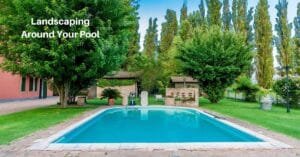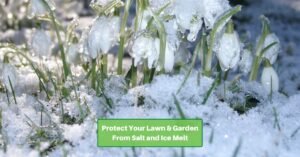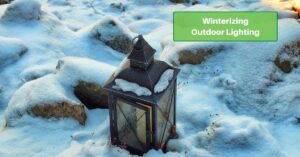Everyone loves a beautiful grass lawn. But many don’t realize how many types of grass there are. They vary in thickness, texture, color, and even optimal height. Some thrive better than others in certain climates.
Many homeowners don’t even think about the kind of grass in their yard – it’s just there, and they just have to water and cut it.
But if you want to keep your lawn looking great, you’ll need to reseed sections of it sometimes. If you’re planting a new lawn, you’ll want to choose the seed that will give the look you want and that will do well where you live.
Here’s a short guide to the most common types of grass that grow in North America.
Warm vs. Cold Season Grasses
The first major distinction among types of grass is warm-season versus cool-season grasses.
Cool-season grasses are best for the northern US and all of Canada. These handle the below-freezing temperatures better. They also do well when things heat up in summer, although they can become dormant when it’s too hot.
These grasses grow best during spring and fall while temperatures range from 60° to 75° F (15° to 24° C). They can stand some dry weather, but not extremes of heat or drought.
On the other hand, warm-weather grasses are best for the southern US. Most are more tolerant of higher temperatures and even drought. They might go dormant if it’s too dry for an extended period, but they’re likely to rebound after. However, they don’t support below-freezing temperatures very well.
Learn more about seeding your lawn!
Types of Warm-Season Grasses
Here are some of the most popular types of warm-season grasses.
Centipede
Centipede grass does require a good amount of moisture but does best where the weather’s warm. It grows short and has an almost turf-like appearance and texture. It’s dense and soft and generally light green.
While it doesn’t like extremely dry conditions, it can get by without an excess. It also does better in sandy soil than many other types of grasses. It prefers acidic soil, too, and does fine with a pH between 4.5 and 6.0. If the soil is alkaline, the grass will likely turn yellow.
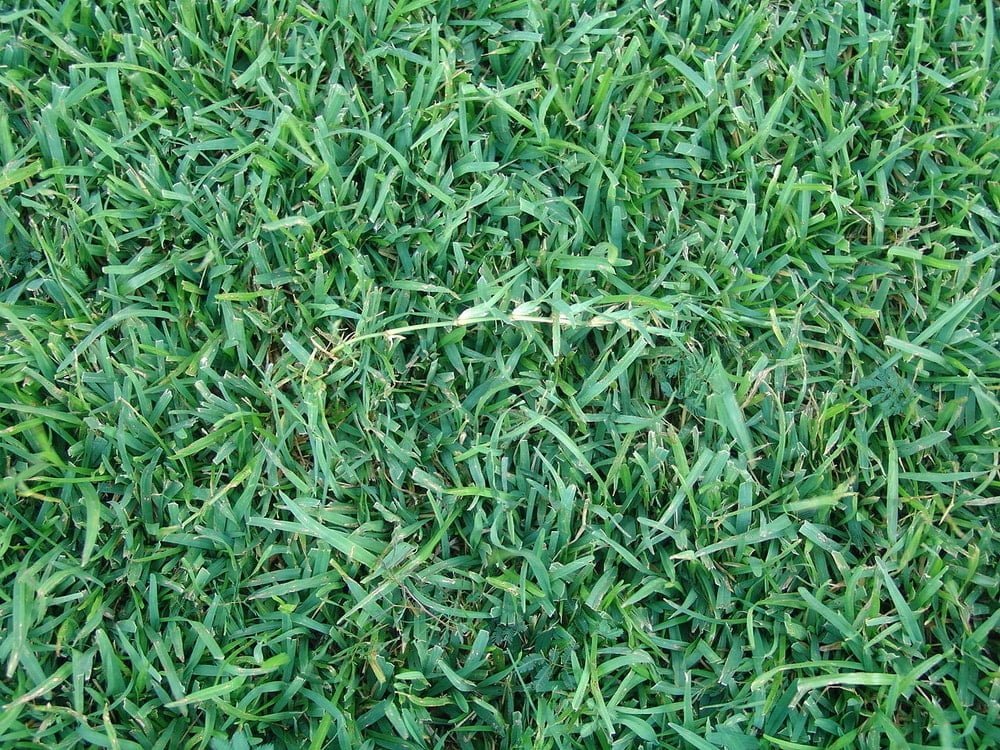
It doesn’t have a true dormant period during the winter months, though. But a real cold snap could damage it.
It’s a great choice when your soil isn’t great for other grasses and the weather doesn’t drop too much. Generally, it’s trimmed very short, even down to a half-inch. For that reason, it’s even used on golf courses for greens and fairways.
Bahia
Bahiagrass can take a beating. That makes it great for areas where there could be a bit of traffic.
It prefers a lot of sunlight, although it can tolerate some shade. It’s another good choice for acidic, sandy soil. The optimal pH range is 5.5 to 6.5.
It’s normally cut to a height of two to four inches, so it’s great as a taller grass. It grows quickly, though, so it still needs to be cut every 7-14 days.
St. Augustine
St. Augustine Grass, along with its Floratam subvariety, doesn’t like the cold at all. It does call for lots of moisture but can tough it out during hot, dry periods. It does well across a range of pH levels in the soil, from about 5.0 to 8.5.
The blades of St. Augustine grass are wide, measuring about a quarter-inch across. It has a dark-green color.
St. Augustine grass can spread on its own. That’s good because the commercially-available seed has only recently been developed. Instead, it was generally planted by sodding. However, that will begin to change as seed production continues to improve.
Read up on tips for mowing your lawn
Bermuda
Bermuda grass is likely the most common lawn grass today. The greyish-green blades are usually cut to under 2 inches, although left untouched, they can reach 6 inches.
This species can hold up well during dry stretches because it has an immense root system that can reach even 6 feet deep.
It’s tough and grows fast, key factors in its popularity. It also supports a wide range of soil acidity. At the same time, though, you’ll need to water and cut it often to keep it healthy. It’s also important to keep an eye on it – it seeds itself and can easily spread into garden beds and other areas where you didn’t want it.
Zoysia
If you’re in a hurry, Zoysia’s not the grass for you. It takes its sweet time growing. It can also produce a lot of seeds if you don’t keep it trimmed.
That helps make for a thick lawn. It can also help slow erosion, so it’s great on slopes. It’s so thick that weeds have trouble breaking through.
It does require a lot of water but less fertilization than some other grasses.
Check these tips for when and how to water your lawn
Types of Cool-Season Grasses
If you’re looking for a grass that will do well in northern climes where the temperature varies more, here are some good choices.
Fescue
Popular fescue types include fine fescue and tall fescue. Both do well in less-than-optimal soil conditions. Each of them has several subvarieties, but we’ll just talk about the general characteristics of these two.
Tall Fescue grows fast as long as it has a lot of sun; it won’t thrive if there’s too much sun. It does best when the pH is between 5.5 and 7.5.
It can survive dry spells because of its deep roots, although moisture always helps it thrive.
This group of fescues shouldn’t be cut below 1.5 inches; ideally, it should be at 2 inches during the peak growing seasons and 3 inches over the summer.
It’s relatively tough, although not as good as Bermuda grass for withstanding constant traffic.
Fine fescue takes its name from its more delicate blades. It also does better in shade than the tall variety. The soil pH should be acidic, with a pH in the range of 5.0 to 6.5.
Most kinds of fine fescue grow in clumps. The blades can be blue-green or medium-green.
It does well even if cut short. It has a relatively low need for water once established, but when it’s started, be sure to keep it moist.
Not many insects find fine fescue attractive, meaning you won’t have to do much pest control, either.
Ryegrass
There are also two types of ryegrass: perennial and annual. Of course, perennial means less work for you since it will grow year after year. Annual ryegrass needs to be reseeded every year.
Both types demand a lot from the soil. You’ll have to stick to a fertilization regimen and water it often. Fertilization should be done about once a month during spring and fall. The ground should also be kept moist but not soaked.
In return, though, you get a durable grass that can tolerate a moderate amount of shade. Cut it to an inch-and-a-half or two inches.
Kentucky Bluegrass
As long as your soil is fertile and drains well, you can expect a beautiful lawn if you have Kentucky bluegrass. It has a dark green color with a hint of blue.
This type of grass does best in soil that’s near neutral or slightly acidic.
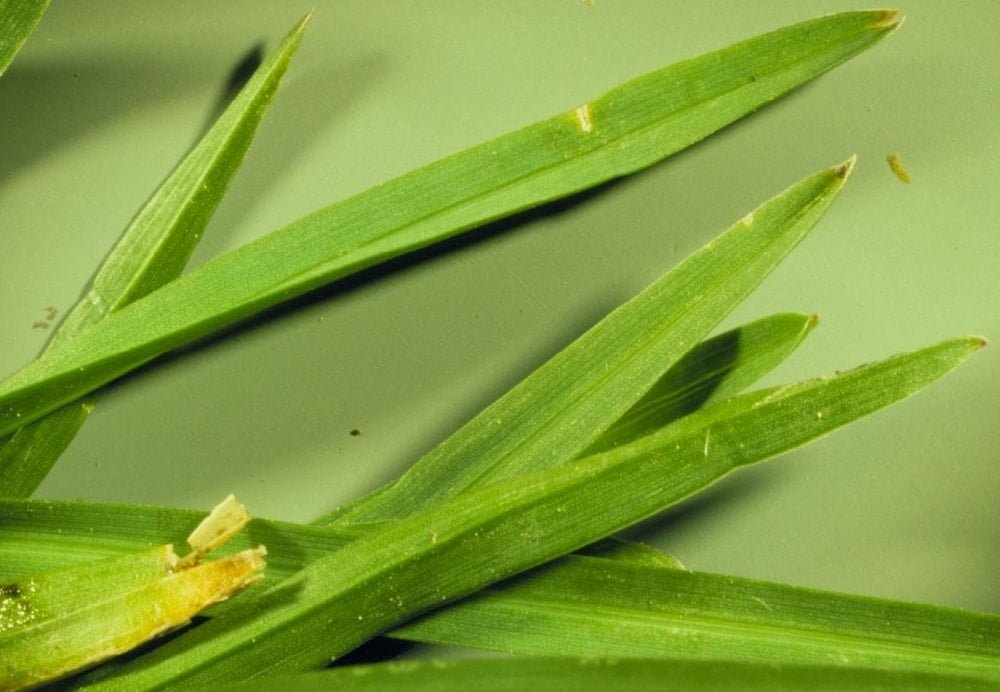
Cut Kentucky bluegrass to a height of 2 to 3 inches. However, if it’s freshly seeded, let it reach about five inches before its first trim. You can also refrain from cutting if you have a particularly dry spell during the summer.
As with most grass types, keep the soil moist – but remember that the water should drain well, particularly for this species.
Among the cool-season grasses, it’s one of the easier types to grow from seeds. It does do well surviving harsh winters and dry summer, going dormant to protect itself. It’ll bounce back with regular watering and drainage afterward.
Conclusion
A beautiful lawn full of lush grass is a real pleasure. It’s important to know what kind of grass you have or what you should choose for a new lawn, though. Many great types will do well even with poor soil or under other tough conditions. Do your research, starting with this article, and you’ll soon have a beautiful lawn!



